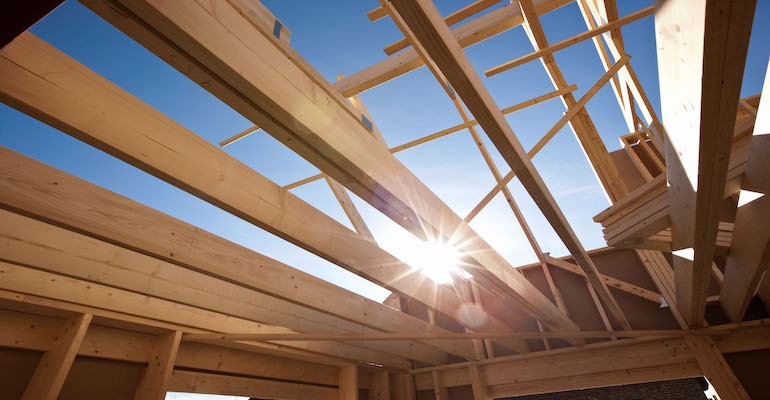NAHB Outlines 'Good/Bad' Housing Provisions in $3.5 Trillion Reconciliation Plan
Build Better Act contains several elements of interest to the housing community.

Recently, the National Association of Home Builders (NAHB) has come out in opposition to the Build Back Better Act, saying it is against both the massive overhaul of the tax code which would generate over $2 trillion in additional tax revenue, as well as aggressive energy efficiency requirements in model building energy codes that would harm housing affordability.
"While the legislation includes critical and much-needed affordable housing investments, this is far outweighed by trillions of dollars in job-killing tax hikes—which risk broad harm to the still-fragile economy—along with direct and indirect cost increases on housing," NAHB EVP and Chief Lobbyist James Tobin wrote in a letter to Richard Neal, the chairman of the Ways and Means Committee. "Many of these tax hikes will inevitably be passed along to new home buyers and renters and will result in a reduction of home building activity at a time when greater supply is urgently needed. The committee should carefully consider how these tax hikes may exacerbate the ongoing housing affordability crisis facing the United States."
NAHB noted that House Financial Services Committee Chairwoman Maxine Waters (D-Calif.) seeks to include portions of the Housing is Infrastructure Act of 2021 into the broader Build Back Better legislative package.
The act sets out:
$300 billion in affordable housing funding, including $34.77 billion for the HOME Investment Partnerships Program, $75 billion for Housing Choice Vouchers and $15 billion for new Project Based Section 8 contracts;
$4.8 billion for rural multifamily housing;
$8.5 billion for the Community Development Block Grant (CDBG) program;
$4.5 billion for NAHB-supported CDBG competitive grants that would require local jurisdictions to eliminate impact fees and restrictive zoning requirements;
$200 million in grant funding through the Department of Agriculture’s Sections 502, 504 and 523 programs to help low-income homeowners in rural areas purchase, repair, upgrade and preserve modest, affordable homes, including manufactured homes;
$50 million to support sweat equity and volunteer-based homeownership programs for low-income households;
$770 million for fair housing initiatives.
The package also provides first-time, first-generation home buyers with the greater of $20,000 or 10% of the purchase price of an eligible home, including down payment costs, closing costs and costs to reduce the rates of interest.
Labor
The House Education and Labor Committee is proposing dramatic increases in monetary penalties for employers who violate the National Labor Relations Act with unfair labor practices, NAHB said.
“As part of the Build Back Better plan, workers’ rights are strengthened with provisions to apply civil monetary penalties for labor law violations, and by updating the dollar amount of worker safety penalties so they are large enough to serve as an adequate deterrent," Education and Labor Committee Chairman Robert C. “Bobby” Scott (VA-03) said at the Sept. 9 markup for Build Back Better Act.
NAHB said these proposed fine increases are so large that it believes businesses facing fines may be forced to close.
NAHB pointed out that the civil fees for each willful violation would go from a maximum of $7,000 to $700,000, and the minimum fee would jump from $5,000 to $500,000.
As proposed, these civil penalties are excessive, according to NAHB, which is urging Congress to reassess these penalties.
Immigration
Immigrants are an essential part of the construction industry workforce, NAHB said.
According to recent statistics, more than 1.5 million immigrants are currently working in the U.S. construction industry, Trent Cotney wrote in a piece for Roofing & Exteriors.
As the attorney pointed out, the following categories of individuals are allowed to work in the United States:
U.S citizens (born in the United States, naturalized or derived);
Noncitizen nationals;
Lawful permanent residents;
Noncitizens with work authorization
The House Judiciary Committee’s proposed reconciliation legislation could allow four groups of immigrants to become permanent U.S. residents, NAHB noted.
Of the four, temporary protected status individuals (defined as nationals of specifically designated countries that are confronting an ongoing armed conflict, environmental disaster, or extraordinary and temporary conditions) and Deferred Action for Childhood Arrivals (DACA)—undocumented immigrants who were brought to the U.S. illegally as children and who grew up knowing America as their only home—participants with legal work authorization have helped to fill part of the construction industry’s growing labor gap, NAHB said.
As construction was designated as an essential industry by the U.S. Department of Homeland Security, the industry will also benefit from essential workers becoming permanent U.S. residents, according to NAHB.
Labor shortage is still a concern as the construction industry lost 587,000 jobs in 2020.
About the Author(s)
You May Also Like




